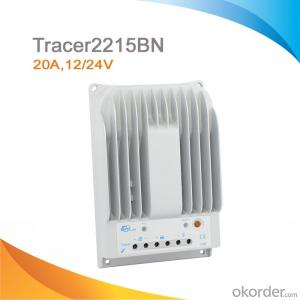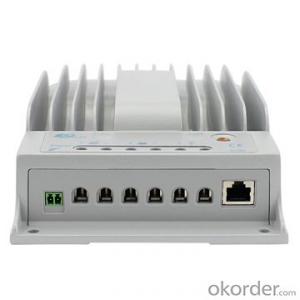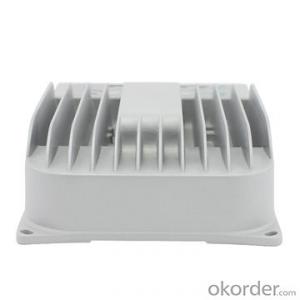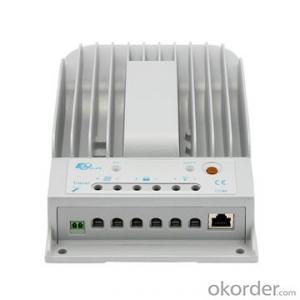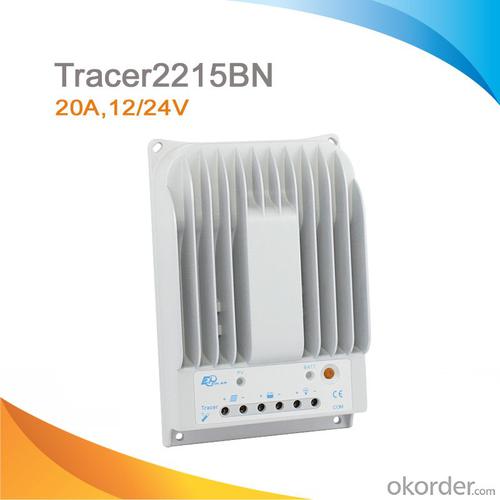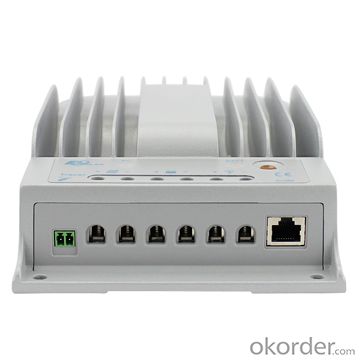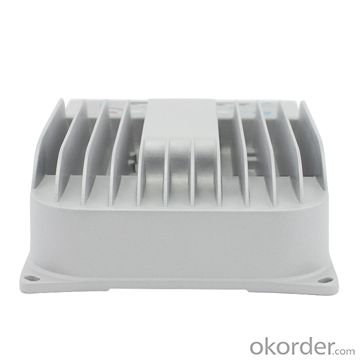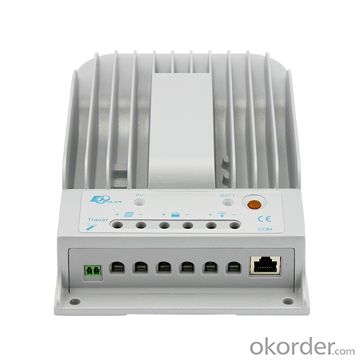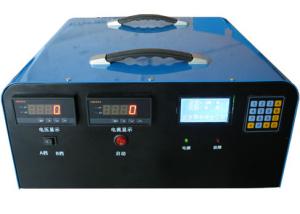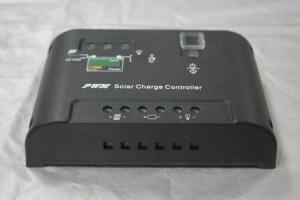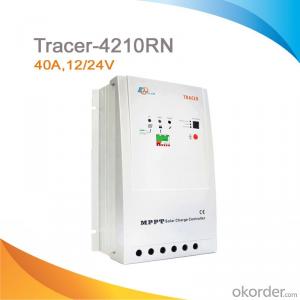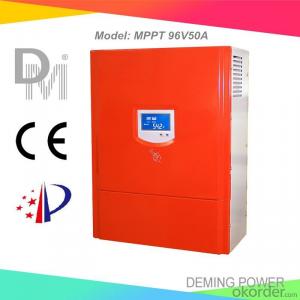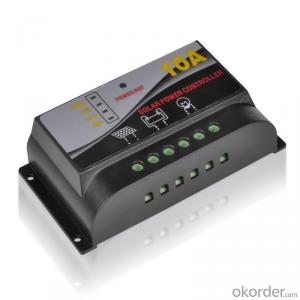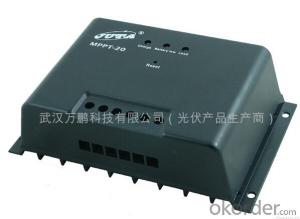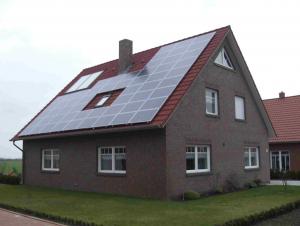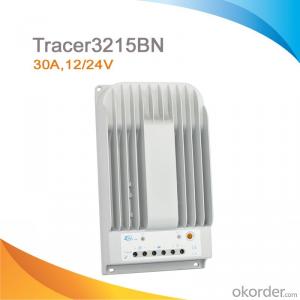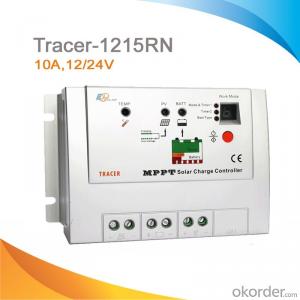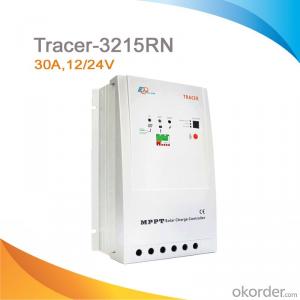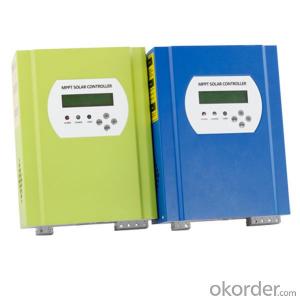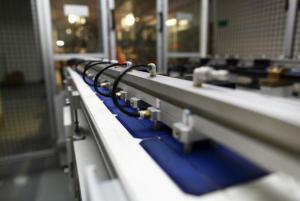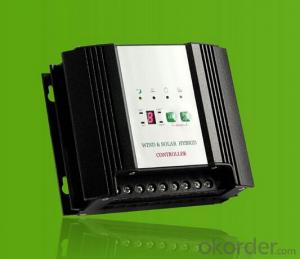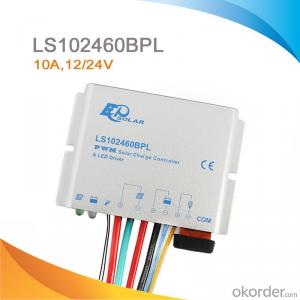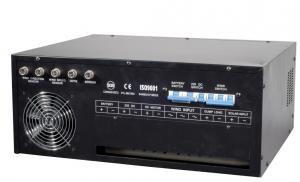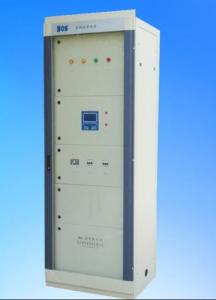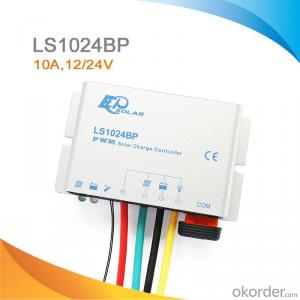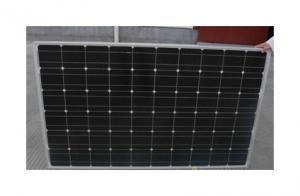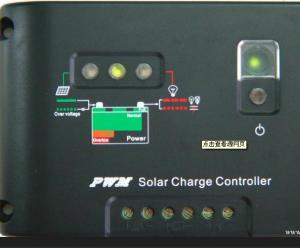20A Solar Controllers MPPT Solar Charge Controller 20A, 12/24V, Tracer2215BN
- Loading Port:
- Tianjin
- Payment Terms:
- TT or LC
- Min Order Qty:
- -
- Supply Capability:
- 10000 pc/month
OKorder Service Pledge
OKorder Financial Service
You Might Also Like
Specifications
10a,20a,30a,40a,12/24v auto work
Die-cast aluminum design
RS485 ports with MODBUS communication
option monitoring software
Features:
·Innovative MPPT technology
·Peak conversion efficiency of 98%
·High tracking efficiency up to 99%
·Several seconds tracking speed
·Die-cast aluminum design and nature cooling
·Temperature compensation
·Diversified load control to meet different requirements
·Four battery type options: Sealed, Gel, Flooded, and USER
·Intelligent lighting and timer control for solar lighting system
·Energy statistics function
·RS485 ports with MODBUS communication protocol
·Optional PC monitoring software and remote meter for real-time monitoring and battery management parameter setting
·Field upgradable firmware
Electronic Protections:
·PV short circuit protection
·PV overvoltage alarm protection
·PV current limiting protection
·PV reverse polarity protection
·Battery overcharge protection
·Battery over discharge protection
·Battery reverse polarity protection
·Load overload protection
·Load short circuit protection
·Overheating protection
Specification:
Model | Tracer1215BN | Tracer2215BN | Tracer3215BN | Tracer4215BN |
Nominal system voltage | 12/24V auto work | |||
Rated battery current | 10A | 20A | 30A | 40A |
Rated load current | 10A | 20A | 20A | 20A |
Max. PV open circuit voltage | 150V | |||
Max. battery voltage | 32V | |||
Max. PV input power | 130W (12V) | 260W (12V) | 390W (12V) | 520W (12V) |
260W (24V) | 520W (24V) | 780W (24V) | 1040W (24V) | |
Equalize charging voltage | Sealed: 14.6V, Flooded: 14.8V, USER: 9~17V | |||
Boost charging voltage | Gel: 14.2V, Sealed: 14.4V, Flooded: 14.6V, USER: 9~17V | |||
Float charging voltage | Gel /Sealed /Flooded: 13.8V, USER: 9~17V | |||
Low voltage reconnect voltage | Gel /Sealed /Flooded: 12.6V, USER: 9~17V | |||
Low voltage disconnect voltage | Gel /Sealed /Flooded: 11.1V, USER: 9~17V | |||
Self-consumption | ≤50mA(12V) ≤27mA(24V) | |||
Grounding | Common negative | |||
Temp. compensation | -3mV/℃/2V | |||
Communication Port | RS485 / RJ45 interface | |||
Working temperature | -35℃~+55℃ | |||
Storage temperature | -35℃~+80℃ | |||
Humidity | ≤95% N.C. | |||
Enclosure | IP30 | |||
Overall dimension | 196x118x36mm | 217x143x56mm | 281x160x60mm | 303x183x64mm |
Terminal | 4mm2 | 10mm2 | 16mm2 | 25mm2 |
Net weight | 0.9kg | 1.5kg | 2.3kg | 2.9kg |
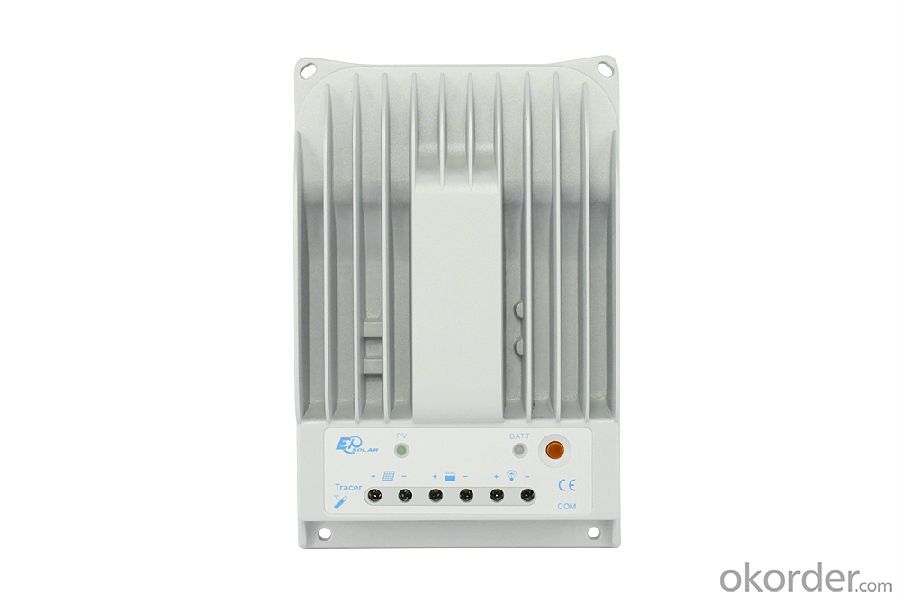
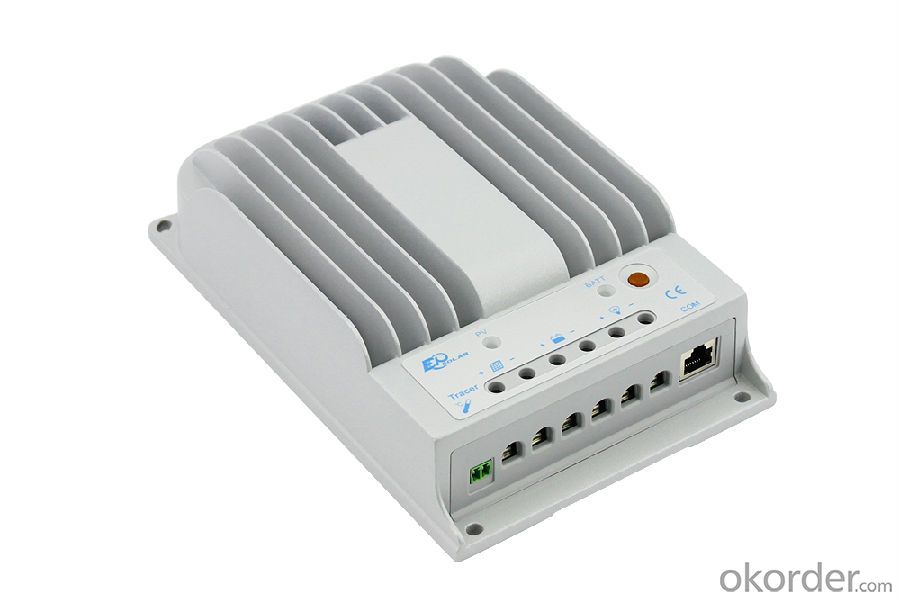
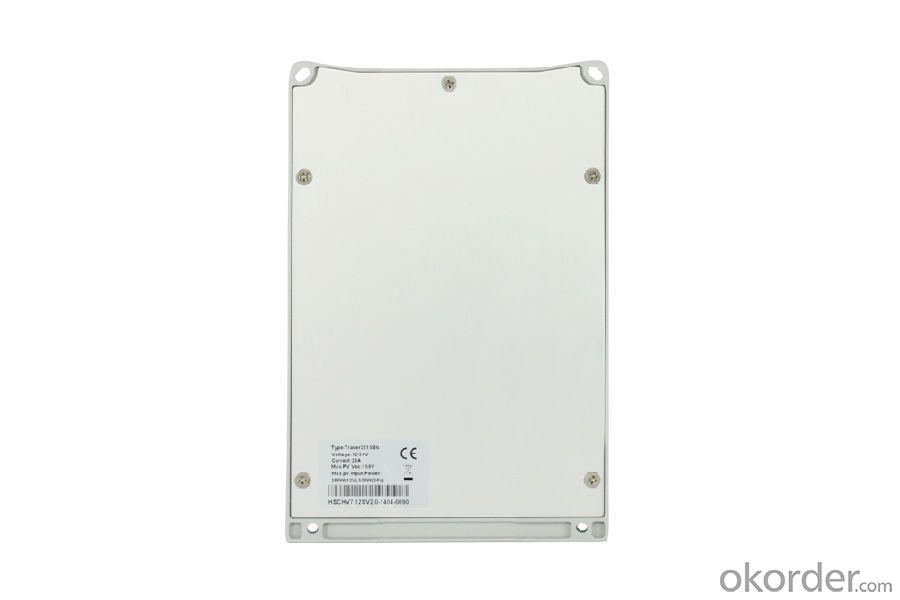
FAQ:
Q1. What is the voltage?
A1. Our 45/60A solar charge controller is 12/24/36/48V auto work.
Q2. What is the difference between MPPT&PWM?
A2. MPPT has higher efficiency, it can track the max power point and won't waste energy.
Q3. What is the efficiency of the MPPT controller?
A3. MPPT>99%, peak conversion efficiency>98%.
Q4. What is the waranty of product?
A4. 12 months.
Q5. What protection does your MPPT controller have?
A5. PV array short circuit, PV reverse polarity, Battery reverse polarity, Over charging, Output short circuit.
- Q: How do I ensure proper grounding for a solar controller?
- To ensure proper grounding for a solar controller, you should follow these steps: 1. Locate a suitable grounding point: Find a metallic structure, such as a grounded metal rod or a metal pipe, preferably close to the solar controller installation site. 2. Clear the grounding area: Remove any dirt, paint, or rust from the chosen grounding point to ensure a good electrical connection. 3. Connect the ground wire: Use a copper conductor or a grounding cable to connect the grounding point to the ground terminal on the solar controller. Make sure the connection is tight and secure. 4. Avoid sharp bends: Ensure the ground wire is not bent sharply, as this can impede the flow of electrical current. Instead, maintain gentle curves or use grounding clamps to navigate around obstacles. 5. Protect the ground wire: Safeguard the ground wire from physical damage or exposure to moisture by using conduit or other suitable protective measures. 6. Test the grounding: After installation, use a multimeter to verify that the ground wire is properly connected and has low resistance to earth. This will ensure that the solar controller is effectively grounded. By following these steps, you can ensure proper grounding for your solar controller, which helps protect against electrical surges and improves system safety and performance.
- Q: How do you prevent reverse current flow with a solar controller?
- A solar controller prevents reverse current flow by using diodes. These diodes allow current to flow from the solar panels to the battery, but block any reverse current from flowing back to the panels.
- Q: Can a solar controller be used with a solar-powered lighting system?
- Yes, a solar controller can be used with a solar-powered lighting system. The solar controller helps regulate and control the charging and discharging of the battery used in the lighting system, ensuring optimal performance and longevity of the system.
- Q: Can a solar controller be used with a solar-powered GPS tracker?
- Yes, a solar controller can be used with a solar-powered GPS tracker. A solar controller regulates the flow of electricity from the solar panels to the battery, ensuring efficient charging and preventing overcharging. This is crucial for maintaining the power supply to the GPS tracker, especially in situations where there may be variations in sunlight intensity.
- Q: Can a solar controller be used with a solar-powered food processing facility?
- Yes, a solar controller can be used with a solar-powered food processing facility. A solar controller is essential in managing and optimizing the power generated by solar panels. It regulates the flow of electricity, protects batteries from overcharging or discharging, and ensures efficient energy utilization. In a solar-powered food processing facility, a solar controller would help maintain a stable and reliable power supply, enabling smooth operations and reducing reliance on non-renewable energy sources.
- Q: Can a solar controller be used with a solar-powered billboard?
- Yes, a solar controller can be used with a solar-powered billboard. A solar controller is designed to regulate the flow of electricity from the solar panels to the battery storage system, ensuring optimal charging and preventing overcharging. In the case of a solar-powered billboard, the solar controller would help manage the power generated by the solar panels, ensuring efficient operation and storage of excess energy for use during low-light conditions or at night.
- Q: Can a solar controller be used with solar-powered well pumps?
- Yes, a solar controller can be used with solar-powered well pumps. A solar controller is typically used to regulate and optimize the charging of batteries in a solar power system. It helps to prevent overcharging and ensure the efficient utilization of solar energy. In the case of solar-powered well pumps, the solar controller can be used to manage the power flow from the solar panels to the pump, ensuring a reliable and consistent water supply.
- Q: Can a solar controller be used with solar-powered water heaters?
- Yes, a solar controller can be used with solar-powered water heaters. A solar controller helps regulate the flow of energy from the solar panels to the water heater, ensuring optimal performance and efficiency. It helps monitor and control the temperature and pressure of the system, preventing overheating or damage. Overall, a solar controller is an essential component in maximizing the effectiveness of solar-powered water heaters.
- Q: Can a solar controller be used with solar panel bypass diodes?
- Yes, a solar controller can be used with solar panel bypass diodes. In fact, it is recommended to use a solar controller in conjunction with bypass diodes to ensure optimal performance and protection of the solar panel system. The solar controller helps regulate the charging process and prevent overcharging, while the bypass diodes help minimize the effect of shading or partial shading on the solar panel's output.
- Q: What is the maximum discharge efficiency of a solar controller?
- The maximum discharge efficiency of a solar controller can vary depending on the specific model and its design. However, in general, a high-quality solar controller can have a discharge efficiency of up to 95% or even higher.
Send your message to us
20A Solar Controllers MPPT Solar Charge Controller 20A, 12/24V, Tracer2215BN
- Loading Port:
- Tianjin
- Payment Terms:
- TT or LC
- Min Order Qty:
- -
- Supply Capability:
- 10000 pc/month
OKorder Service Pledge
OKorder Financial Service
Similar products
Hot products
Hot Searches
Related keywords
